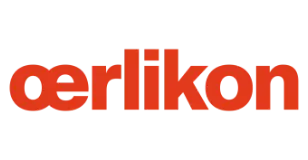
Global Automotive Lubricants Market Research Report: Forecast (2025-2030)
Automotive Lubricants Market - By Product Type (Engine Oil Transmission Fluid Gear Oil Hydraulic Fluid Grease Others (Coolants, Brake Fluids, etc.)) By Vehicle Type (Passenger V...ehicles Commercial Vehicles [Light Commercial Vehicles (LCVs) Heavy Commercial Vehicles (HCVs) Electric Vehicles (EVs) Two-Wheelers]) By Base Oil (Mineral Oil Synthetic Oil Semi-Synthetic Oil Bio-based Oil) By Distribution Channel (OEM- Aftermarket [Online Retail Specialty Stores Independent Workshops]) and others Read more
- Automotive
- May 2023
- Pages 190
- Report Format: PDF, Excel, PPT
Market Definition
The fluidic substances used for reducing friction between surfaces and preventing wear and tear of automobile components are automotive lubricants. They minimize the heat generated between parts, and efficiency and functioning improve critical components such as engines, hinges, bearings, and hydraulic gears. They are used for brake and fuel systems, body part stamping, transmission manufacturing, and other automotive mechanics.
Market Insights & Analysis: Global Automotive Lubricants Market (2025-30):
The Global Automotive Lubricants Market size was valued at around USD 81.06 billion in 2024 and is projected to reach USD 101.39 billion by 2030. Along with this, the market is estimated to grow at a CAGR of around 3.80% during the forecast period, i.e., 2025-30.
| Report Coverage | Details |
|---|---|
| Historical Years | 2020–23 |
| Forecast Years | 2025–30 |
| Market Value in 2024 | USD 81.06 Billion |
| Market Value by 2030 | USD 101.39 Billion |
| CAGR (2025–30) | 3.80% |
| Leading Region | Asia-Pacific |
| Top Key Players | Exxon Mobil, Royal Dutch Shell, BP Plc., Total Energies SE, Chevron Corporation, Fuchs Petrolub SE, Valvoline Inc., Petronas Lubricants International, Idemitsu Kosan Co., Ltd, Sinopec Lubricant Company, and Other |
| Segmentation | By Product Type (Engine Oil Transmission Fluid Gear Oil Hydraulic Fluid Grease Others (Coolants, Brake Fluids, etc.)) By Vehicle Type (Passenger Vehicles Commercial Vehicles [Light Commercial Vehicles (LCVs) Heavy Commercial Vehicles (HCVs) Electric Vehicles (EVs) Two-Wheelers]) By Base Oil (Mineral Oil Synthetic Oil Semi-Synthetic Oil Bio-based Oil) By Distribution Channel (OEM- Aftermarket [Online Retail Specialty Stores Independent Workshops]) and others |
| Key Report Highlights |
|
*Boost strategic growth with in-depth market analysis - Get a free sample preview today!
The market growth is owed principally to the surging demand for efficient automotive vehicles & the rising need for high-performance engines. Additionally, the rise in construction and agricultural activities further extends the requirement for lubricants for construction and agricultural vehicles, expanding the market. Furthermore, the rising number of on-road vehicles, private vehicles for transportation, economic stability, consumer affordability, and maintenance of both private and public vehicles fuels the elevation of the industry. Also, the presence of aging vehicles expands the scope of their care, further fueling the market growth.
With the focus of authorities and organizations on increasing vehicle production and awareness of suitable quality products extending the life and experience of vehicles, more application of it is bound to continue. Moreover, as the durability of vehicles is majorly dependent on the smooth working of parts, which is facilitated by engine oil, or other product types, the market is likely to propel exponentially during the forecasting period.
On the contrary, the emergence and adoption of electric vehicles pose a threat to the market. However, increasing inclination towards luxurious, modern, and durable vehicles and demand for fuel efficiency to maintain the vehicle's performance is likely to propel industrial expansion.

Global Automotive Lubricants Market Driver:
Expansion of the Automotive Industry Presenting the Demand for Frequent Lubrication – The automotive industry is expanding with the rise in disposable income, the addition of advanced features, and consumer desire to own a passenger or another vehicle. This industrial growth has driven the industry, as lubricants play a vital role in the smooth working of engines and vehicles. Their characteristics of durability, vehicle protection, reduction of friction between the engine parts, and more are essential to extend vehicle life, especially regularly. Thus the industry has been driven by the conventional desire to maintain the quality and smoothness of engines and vehicles.
Global Automotive Lubricants Market Opportunity:
Increasing Inclination Towards Environment-Friendly and Sustainable Lubricants – The rising usage of different lubricants is expected to surge the market growth. Additionally, the increasing environmental awareness among consumers and manufacturers to reduce the avoidable impact of some aspects and products by adopting alternative options like bio-based over mineral variants pose a growth opportunity for the industry. A consumer shift could be expected with synthetic greases, which undergo extensive treatment to enhance their performance, and degradable and environment friendly bio-lubricants. These products offer improved fuel efficiency, enhanced hardware capability, and lower emissions. With the rise in environmental concerns, the industry is presented with a growth opportunity to expand four-dimensionally.
Global Automotive Lubricants Market Challenge:
The Increasing Emergence of Electric Vehicles Outpacing ICE Variants – With the addition of technology and further advancement in the automotive sectors, the emergence of electric vehicles is gaining traction globally. However, it impedes as a threat to the industry as it diminishes the requirement for engine oil or grease as a whole by replacing the engine with an electric motor. Thus, increasing sales and adoption of electric vehicles pose a threat to the industry. Besides, the presence of lesser components and parts in the vehicles and the depreciation of various parts with the implementation of technology and advanced gadgets further pose a hindrance to the automotive lubricant market.
Global Automotive Lubricants Market Trend:
Rising Industrial Preference for Synthetic Grease– Increasing awareness about the usage of synthetic lubricants leading to a rise in their utilization has garnered the industry’s interest. Synthetic oil provides better lubrication than mineral oils, causing a shift in consumers to opt more for synthetic ones. Moreover, the trend of adopting new and better ways to enhance vehicle productivity and automotive functions by both consumers and manufacturers is leading to a moderate flow of endorsement of these greases. Furthermore, governmental bodies are also establishing minimum standards for such products to control rising emissions resulting in rising applications of low-viscosity greases such as synthetic or semi-synthetic oils, fueling the market growth.
Global Automotive Lubricants Market (2025-30): Segmentation Analysis
The Global Automotive Lubricants Market study of MarkNtel Advisors evaluates & highlights the major trends & influencing factors in each segment & includes predictions for the period 2025–2030 at the global, regional, and national levels. Based on the analysis, the market has been further classified as:
Based on Product Type:
- Engine Oil
- Transmission Fluid
- Gear Oil
- Hydraulic Fluid
- Grease
- Others (Coolants, Brake Fluids, etc.)
Engine oil is expected to gain the major market share of the Global Automotive Lubricants Market during the forecast period, continuing its domination like the historical period. The segment's rise is aided by the utilization and requirement of engine oil to ensure the continuous working of engines by creating a thin film between the moving parts to enhance the transfer of heat and reduce tension during the contact of different parts.
The primary purpose of engine oil is to minimize wear and tear and friction on moving parts and prevent varnish and sludge, ensuring the quality and the whole process smoothly. By lubricating internal combustion engines, protecting them from corrosion, and ensuring smooth operation of the engine, it performs an essential role in the functioning of the vehicle; thus, the requirement for regular application of engine oil enthrals the market's elevation.
Additionally, the surging number of gasoline and diesel vehicles further safeguards the utilization of engine oils. Moreover, commercial and high-duty vehicles such as tractors, off-the-road vehicles in construction and farming, trucks, and others require engine oil for healthy functioning. As a result, they are less likely to be replaced by other technologies ensuring industrial growth.
Based on Base Oil:
- Mineral Oil
- Synthetic Oil
- Semi-Synthetic Oil
- Bio-based Oil
Among all, Mineral Oil are expected to govern the market during the forecasting period, owing to the numerous benefits and utilization by on-road vehicles. Also referred to as Regular and Conventional oils, Mineral oils have temperature-resisting properties along with cohesion and strength, enabling the adoption of engine oils for lubrication and superior protection of engines. Additionally, the formulation quality of mineral oil in various levels and viscosities complements simple machines, further exemplifying the industry.
Global Automotive Lubricants Market (2025-30): Regional Projection
Geographically, the Global Automotive Lubricants Market expands across:
- North America
- Asia-Pacific
- South America
- Europe
- The Middle East and Africa
Globally, Asia-Pacific is anticipated to gain the largest market share during the forecasting period, influenced by the growth in the automotive industry as a whole in the region. The rising population, coupled with surging urbanization, is fueling the demand for automotive vehicles. The region’s government also focuses on replacing obsolete cars, increasing the demand for upgraded, high-quality products. The high sales of vehicles combined with lubrication required for maintenance of sold vehicles are collectively aiding in the market expansion.
Moreover, the region’s marine industry, with numerous ports and rising trade activities with other economies, fosters lucrative opportunities for the industry, as it would result in the extended application. Along similar lines, with the advent of further industrialization and installing various manufacturing plants, lubricant application would also widen, extending the market growth.
Global Automotive Lubricants Industry Recent Development:
- 2024: TotalEnergies acquired Tecoil a Finnish company specializing in Re-Refined Base Oils (RRBOs). Tecoil's 50,000-tonne-per-year RRBO production facility in Haminia, Finland, will accelerate the use of RRBOs in TotalEnergies' high-end lubricant production, meeting customer demand for high-performance and environmentally friendly products. Tecoil's acquisition is part of TotalEnergies' strategy to develop a circular economy for lubricants in Europe
- In 2024: Valvoline forms a strategic alliance with Al-Nasser Industrial Enterprises for the supply of its specialty lubricants and automotive solutions in the GCC area.
Gain a Competitive Edge with Our Global Automotive Lubricants Market Report
- Global Automotive Lubricants Market Report by MarkNtel Advisors provides a detailed & thorough analysis of market size & share, growth rate, competitive landscape, and key players. This comprehensive analysis helps businesses gain a holistic understanding of the market dynamics & make informed decisions.
- This report also highlights current market trends & future projections, allowing businesses to identify emerging opportunities & potential challenges. By understanding market forecasts, companies can align their strategies & stay ahead of the competition.
- Global Automotive Lubricants Market Report aids in assessing & mitigating risks associated with entering or operating in the market. By understanding market dynamics, regulatory frameworks, and potential challenges, businesses can develop strategies to minimize risks & optimize their operations.
*Reports Delivery Format - Market research studies from MarkNtel Advisors are offered in PDF, Excel and PowerPoint formats. Within 24 hours of the payment being successfully received, the report will be sent to your email address.
Frequently Asked Questions
- Market Segmentation
- Introduction
- Product Definition
- Research Process
- Assumptions
- Executive Summary
- Global Automotive Lubricants Market Regulations, Policies & Product Standards
- Global Automotive Lubricants Market Trends & Developments
- Global Automotive Lubricants Market Dynamics
- Drivers
- Challenges
- Global Automotive Lubricants Market Hotspots & Opportunities
- Global Automotive Lubricants Market Value Chain Analysis
- Global Automotive Lubricants Market Outlook, 2020-2030F
- Market Size & Analysis
- Revenues (USD Million Units)
- Market Volume (Million Units)
- Market Share & Analysis
- By Product Type
- Engine Oil– Market Size & Forecast 2020-2030, USD Million & Million Units
- Transmission Fluid– Market Size & Forecast 2020-2030, USD Million & Million Units
- Gear Oil– Market Size & Forecast 2020-2030, USD Million & Million Units
- Hydraulic Fluid– Market Size & Forecast 2020-2030, USD Million & Million Units
- Grease– Market Size & Forecast 2020-2030, USD Million & Million Units
- Others (Coolants, Brake Fluids, etc.) – Market Size & Forecast 2020-2030, USD Million & Million Units
- By Vehicle Type
- Passenger Vehicles– Market Size & Forecast 2020-2030, USD Million & Million Units
- Commercial Vehicles
- Light Commercial Vehicles (LCVs)– Market Size & Forecast 2020-2030, USD Million & Million Units
- Heavy Commercial Vehicles (HCVs)– Market Size & Forecast 2020-2030, USD Million & Million Units
- Electric Vehicles (EVs)– Market Size & Forecast 2020-2030, USD Million & Million Units
- Two-Wheelers
- By Base Oil
- Mineral Oil– Market Size & Forecast 2020-2030, USD Million & Million Units
- Synthetic Oil – Market Size & Forecast 2020-2030, USD Million & Million Units
- Semi-Synthetic Oil– Market Size & Forecast 2020-2030, USD Million & Million Units
- Bio-based Oil– Market Size & Forecast 2020-2030, USD Million & Million Units
- By Distribution Channel
- OEM- Market Size & Forecast 2020-2030, USD Million & Million Units
- Aftermarket - Market Size & Forecast 2020-2030, USD Million & Million Units
- Online Retail - Market Size & Forecast 2020-2030, USD Million & Million Units
- Specialty Stores - Market Size & Forecast 2020-2030, USD Million & Million Units
- Independent Workshops- Market Size & Forecast 2020-2030, USD Million & Million Units
- By Region
- North America
- Europe
- Asia-Pacific
- Latin America
- Middle East & Africa
- By Product Type
- Market Size & Analysis
- North America Automotive Lubricants Market Outlook, 2020-2030F
- Market Size & Analysis
- Market Revenues (USD Million)
- Market Volume (Million Units)
- Market Share & Analysis
- By Product Type – Market Size & Forecast 2020-2030, USD Million & Million Units
- By Vehicle Type – Market Size & Forecast 2020-2030, USD Million & Million Units
- By Base Oil – Market Size & Forecast 2020-2030, USD Million & Million Units
- By Distribution Channel – Market Size & Forecast 2020-2030, USD Million & Million Units
- By Country
- United States
- Canada
- Mexico
- United States Automotive Lubricants Market Outlook, 2020-2030F
- Market Size & Analysis
- Market Revenues (USD Million)
- Market Volume (Million Units)
- Market Share & Analysis
- By Product Type – Market Size & Forecast 2020-2030, USD Million & Million Units
- By Vehicle Type – Market Size & Forecast 2020-2030, USD Million & Million Units
- By Base Oil – Market Size & Forecast 2020-2030, USD Million & Million Units
- By Distribution Channel – Market Size & Forecast 2020-2030, USD Million & Million Units
- Market Size & Analysis
- Canada Automotive Lubricants Market Outlook, 2020-2030F
- Market Size & Analysis
- Market Revenues (USD Million)
- Market Volume (Million Units)
- Market Share & Analysis
- By Product Type – Market Size & Forecast 2020-2030, USD Million & Million Units
- By Vehicle Type – Market Size & Forecast 2020-2030, USD Million & Million Units
- By Base Oil – Market Size & Forecast 2020-2030, USD Million & Million Units
- By Distribution Channel – Market Size & Forecast 2020-2030, USD Million & Million Units
- Market Size & Analysis
- Mexico Automotive Lubricants Market Outlook, 2020- 2030F
- Market Size & Analysis
- Market Revenues (USD Million)
- Market Volume (Million Units)
- Market Share & Analysis
- By Product Type – Market Size & Forecast 2020-2030, USD Million & Million Units
- By Vehicle Type – Market Size & Forecast 2020-2030, USD Million & Million Units
- By Base Oil – Market Size & Forecast 2020-2030, USD Million & Million Units
- By Distribution Channel – Market Size & Forecast 2020-2030, USD Million & Million Units
- Market Size & Analysis
- Market Size & Analysis
- Europe Automotive Lubricants Market Outlook, 2020-2030F
- Market Size & Analysis
- Market Revenues (USD Million)
- Market Volume (Million Units)
- Market Share & Analysis
- By Product Type – Market Size & Forecast 2020-2030, USD Million & Million Units
- By Vehicle Type – Market Size & Forecast 2020-2030, USD Million & Million Units
- By Base Oil – Market Size & Forecast 2020-2030, USD Million & Million Units
- By Distribution Channel – Market Size & Forecast 2020-2030, USD Million & Million Units
- By Country
- Germany
- United Kingdom
- France
- Italy
- Spain
- Rest of Europe
- Germany Automotive Lubricants Market Outlook, 2020-2030F
- Market Size & Analysis
- Market Revenues (USD Million)
- Market Volume (Million Units)
- Market Share & Analysis
- By Product Type– Market Size & Forecast 2020-2030, USD Million & Million Units
- By Vehicle Type– Market Size & Forecast 2020-2030, USD Million & Million Units
- By Base Oil– Market Size & Forecast 2020-2030, USD Million & Million Units
- By Distribution Channel– Market Size & Forecast 2020-2030, USD Million & Million Units
- Market Size & Analysis
- United Kingdom Automotive Lubricants Market Outlook, 2020-2030F
- Market Size & Analysis
- Market Revenues (USD Million)
- Market Volume (Million Units)
- Market Share & Analysis
- By Product Type– Market Size & Forecast 2020-2030, USD Million & Million Units
- By Vehicle Type– Market Size & Forecast 2020-2030, USD Million & Million Units
- By Base Oil– Market Size & Forecast 2020-2030, USD Million & Million Units
- By Distribution Channel– Market Size & Forecast 2020-2030, USD Million & Million Units
- Market Size & Analysis
- France Automotive Lubricants Market Outlook, 2020-2030F
- Market Size & Analysis
- Market Revenues (USD Million)
- Market Volume (Million Units)
- Market Share & Analysis
- By Product Type– Market Size & Forecast 2020-2030, USD Million & Million Units
- By Vehicle Type– Market Size & Forecast 2020-2030, USD Million & Million Units
- By Base Oil– Market Size & Forecast 2020-2030, USD Million & Million Units
- By Distribution Channel– Market Size & Forecast 2020-2030, USD Million & Million Units
- Market Size & Analysis
- Italy Automotive Lubricants Market Outlook, 2020-2030F
- Market Size & Analysis
- Market Revenues (USD Million)
- Market Volume (Million Units)
- Market Share & Analysis
- By Product Type– Market Size & Forecast 2020-2030, USD Million & Million Units
- By Vehicle Type– Market Size & Forecast 2020-2030, USD Million & Million Units– Market Size & Forecast 2020-2030, USD Million & Million Units
- By Base Oil– Market Size & Forecast 2020-2030, USD Million & Million Units
- By Distribution Channel– Market Size & Forecast 2020-2030, USD Million & Million Units
- Market Size & Analysis
- Sapin Automotive Lubricants Market Outlook, 2020-2030F
- Market Size & Analysis
- Market Revenues (USD Million)
- Market Volume (Million Units)
- Market Share & Analysis
- By Product Type– Market Size & Forecast 2020-2030, USD Million & Million Units
- By Vehicle Type– Market Size & Forecast 2020-2030, USD Million & Million Units
- By Base Oil– Market Size & Forecast 2020-2030, USD Million & Million Units
- By Distribution Channel– Market Size & Forecast 2020-2030, USD Million & Million Units
- Market Size & Analysis
- Rest of Europe Automotive Lubricants Market Outlook, 2020-2030F
- Market Size & Analysis
- Market Revenues (USD Million)
- Market Volume (Million Units)
- Market Share & Analysis
- By Product Type– Market Size & Forecast 2020-2030, USD Million & Million Units
- By Vehicle Type– Market Size & Forecast 2020-2030, USD Million & Million Units
- By Base Oil– Market Size & Forecast 2020-2030, USD Million & Million Units
- By Distribution Channel– Market Size & Forecast 2020-2030, USD Million & Million Units
- Market Size & Analysis
- Market Size & Analysis
- Asia-Pacific Automotive Lubricants Market Outlook, 2020-2030F
- Market Size & Analysis
- Market Revenues (USD Million)
- Market Volume (Million Units)
- Market Share & Analysis
- By Product Type – Market Size & Forecast 2020-2030, USD Million & Million Units
- By Vehicle Type – Market Size & Forecast 2020-2030, USD Million & Million Units
- By Base Oil – Market Size & Forecast 2020-2030, USD Million & Million Units
- By Distribution Channel – Market Size & Forecast 2020-2030, USD Million & Million Units
- By Country
- China
- Japan
- India
- South Korea
- Australia
- Rest of Asia-Pacific
- China Automotive Lubricants Market Outlook, 2020-2030F
- Market Size & Analysis
- Market Revenues (USD Million)
- Market Volume (Million Units)
- Market Share & Analysis
- By Product Type– Market Size & Forecast 2020-2030, USD Million & Million Units
- By Vehicle Type– Market Size & Forecast 2020-2030, USD Million & Million Units
- By Base Oil– Market Size & Forecast 2020-2030, USD Million & Million Units
- By Distribution Channel– Market Size & Forecast 2020-2030, USD Million & Million Units
- Market Size & Analysis
- Japan Automotive Lubricants Market Outlook, 2020-2030F
- Market Size & Analysis
- Market Revenues (USD Million)
- Market Volume (Million Units)
- Market Share & Analysis
- By Product Type– Market Size & Forecast 2020-2030, USD Million & Million Units
- By Vehicle Type– Market Size & Forecast 2020-2030, USD Million & Million Units
- By Base Oil– Market Size & Forecast 2020-2030, USD Million & Million Units
- By Distribution Channel– Market Size & Forecast 2020-2030, USD Million & Million Units
- Market Size & Analysis
- India Automotive Lubricants Market Outlook, 2020-2030F
- Market Size & Analysis
- Market Revenues (USD Million)
- Market Volume (Million Units)
- Market Share & Analysis
- By Product Type– Market Size & Forecast 2020-2030, USD Million & Million Units
- By Vehicle Type– Market Size & Forecast 2020-2030, USD Million & Million Units
- By Base Oil– Market Size & Forecast 2020-2030, USD Million & Million Units
- By Distribution Channel– Market Size & Forecast 2020-2030, USD Million & Million Units
- Market Size & Analysis
- South Korea Automotive Lubricants Market Outlook, 2020-2030F
- Market Size & Analysis
- Market Revenues (USD Million)
- Market Volume (Million Units)
- Market Share & Analysis
- By Product Type– Market Size & Forecast 2020-2030, USD Million & Million Units
- By Vehicle Type– Market Size & Forecast 2020-2030, USD Million & Million Units
- By Base Oil– Market Size & Forecast 2020-2030, USD Million & Million Units
- By Distribution Channel– Market Size & Forecast 2020-2030, USD Million & Million Units
- Market Size & Analysis
- Australia Automotive Lubricants Market Outlook, 2020-2030F
- Market Size & Analysis
- Market Revenues (USD Million)
- Market Volume (Million Units)
- Market Share & Analysis
- By Product Type– Market Size & Forecast 2020-2030, USD Million & Million Units
- By Vehicle Type– Market Size & Forecast 2020-2030, USD Million & Million Units
- By Base Oil– Market Size & Forecast 2020-2030, USD Million & Million Units
- By Distribution Channel– Market Size & Forecast 2020-2030, USD Million & Million Units
- Market Size & Analysis
- Rest of Asia-Pacific Automotive Lubricants Market Outlook, 2020-2030F
- Market Size & Analysis
- Market Revenues (USD Million)
- Market Volume (Million Units)
- Market Share & Analysis
- By Product Type– Market Size & Forecast 2020-2030, USD Million & Million Units
- By Vehicle Type– Market Size & Forecast 2020-2030, USD Million & Million Units
- By Base Oil– Market Size & Forecast 2020-2030, USD Million & Million Units
- By Distribution Channel– Market Size & Forecast 2020-2030, USD Million & Million Units
- Market Size & Analysis
- Market Size & Analysis
- South America Automotive Lubricants Market Outlook, 2020-2030F
- Market Size & Analysis
- Market Revenues (USD Million)
- Market Volume (Million Units)
- Market Share & Analysis
- By Product Type – Market Size & Forecast 2020-2030, USD Million & Million Units
- By Vehicle Type – Market Size & Forecast 2020-2030, USD Million & Million Units
- By Base Oil – Market Size & Forecast 2020-2030, USD Million & Million Units
- By Distribution Channel – Market Size & Forecast 2020-2030, USD Million & Million Units
- By Country
- Brazil
- Argentina
- Rest of South America
- Brazil Automotive Lubricants Market Outlook, 2020-2030F
- Market Size & Analysis
- Market Revenues (USD Million)
- Market Volume (Million Units)
- Market Share & Analysis
- By Product Type– Market Size & Forecast 2020-2030, USD Million & Million Units
- By Vehicle Type– Market Size & Forecast 2020-2030, USD Million & Million Units
- By Base Oil– Market Size & Forecast 2020-2030, USD Million & Million Units
- By Distribution Channel– Market Size & Forecast 2020-2030, USD Million & Million Units
- Market Size & Analysis
- Argentina Automotive Lubricants Market Outlook, 2020-2030F
- Market Size & Analysis
- Market Revenues (USD Million)
- Market Volume (Million Units)
- Market Share & Analysis
- By Product Type– Market Size & Forecast 2020-2030, USD Million & Million Units
- By Vehicle Type– Market Size & Forecast 2020-2030, USD Million & Million Units
- By Base Oil– Market Size & Forecast 2020-2030, USD Million & Million Units
- By Distribution Channel– Market Size & Forecast 2020-2030, USD Million & Million Units
- Market Size & Analysis
- Rest of South America Automotive Lubricants Market Outlook, 2020-2030F
- Market Size & Analysis
- Market Revenues (USD Million)
- Market Volume (Million Units)
- Market Share & Analysis
- By Product Type– Market Size & Forecast 2020-2030, USD Million & Million Units
- By Vehicle Type– Market Size & Forecast 2020-2030, USD Million & Million Units
- By Base Oil– Market Size & Forecast 2020-2030, USD Million & Million Units
- By Distribution Channel– Market Size & Forecast 2020-2030, USD Million & Million Units
- Market Size & Analysis
- Market Size & Analysis
- Middle East and Africa Automotive Lubricants Market Outlook, 2020-2030F
- Market Size & Analysis
- Market Revenues (USD Million)
- Market Volume (Million Units)
- Market Share & Analysis
- By Product Type – Market Size & Forecast 2020-2030, USD Million & Million Units
- By Vehicle Type – Market Size & Forecast 2020-2030, USD Million & Million Units
- By Base Oil – Market Size & Forecast 2020-2030, USD Million & Million Units
- By Distribution Channel – Market Size & Forecast 2020-2030, USD Million & Million Units
- By Country
- Saudi Arabia
- The UAE
- Turkey
- Israel
- South Africa
- Rest of Middle East and Africa
- Saudi Arabia Automotive Lubricants Market Outlook, 2020-2030F
- Market Size & Analysis
- Market Revenues (USD Million)
- Market Volume (Million Units)
- Market Share & Analysis
- By Product Type– Market Size & Forecast 2020-2030, USD Million & Million Units
- By Vehicle Type– Market Size & Forecast 2020-2030, USD Million & Million Units
- By Base Oil– Market Size & Forecast 2020-2030, USD Million & Million Units
- By Distribution Channel– Market Size & Forecast 2020-2030, USD Million & Million Units
- Market Size & Analysis
- The UAE Automotive Lubricants Market Outlook, 2020-2030F
- Market Size & Analysis
- Market Revenues (USD Million)
- Market Volume (Million Units)
- Market Share & Analysis
- By Product Type– Market Size & Forecast 2020-2030, USD Million & Million Units
- By Vehicle Type– Market Size & Forecast 2020-2030, USD Million & Million Units
- By Base Oil– Market Size & Forecast 2020-2030, USD Million & Million Units
- By Distribution Channel– Market Size & Forecast 2020-2030, USD Million & Million Units
- Market Size & Analysis
- Turkey Automotive Lubricants Market Outlook, 2020-2030F
- Market Size & Analysis
- Market Revenues (USD Million)
- Market Volume (Million Units)
- Market Share & Analysis
- By Product Type– Market Size & Forecast 2020-2030, USD Million & Million Units
- By Vehicle Type– Market Size & Forecast 2020-2030, USD Million & Million Units
- By Base Oil– Market Size & Forecast 2020-2030, USD Million & Million Units
- By Distribution Channel– Market Size & Forecast 2020-2030, USD Million & Million Units
- Market Size & Analysis
- Israel Automotive Lubricants Market Outlook, 2020-2030F
- Market Size & Analysis
- Market Revenues (USD Million)
- Market Volume (Million Units)
- Market Share & Analysis
- By Product Type– Market Size & Forecast 2020-2030, USD Million & Million Units
- By Vehicle Type– Market Size & Forecast 2020-2030, USD Million & Million Units
- By Base Oil– Market Size & Forecast 2020-2030, USD Million & Million Units
- By Distribution Channel– Market Size & Forecast 2020-2030, USD Million & Million Units
- Market Size & Analysis
- South Africa Automotive Lubricants Market Outlook, 2020-2030F
- Market Size & Analysis
- Market Revenues (USD Million)
- Market Volume (Million Units)
- Market Share & Analysis
- By Product Type– Market Size & Forecast 2020-2030, USD Million & Million Units
- By Vehicle Type– Market Size & Forecast 2020-2030, USD Million & Million Units
- By Base Oil– Market Size & Forecast 2020-2030, USD Million & Million Units
- By Distribution Channel– Market Size & Forecast 2020-2030, USD Million & Million Units
- Market Size & Analysis
- Rest of Middle East and Africa Automotive Lubricants Market Outlook, 2020-2030F
- Market Size & Analysis
- Market Revenues (USD Million)
- Market Volume (Million Units)
- Market Share & Analysis
- By Product Type– Market Size & Forecast 2020-2030, USD Million & Million Units
- By Vehicle Type– Market Size & Forecast 2020-2030, USD Million & Million Units
- By Base Oil– Market Size & Forecast 2020-2030, USD Million & Million Units
- By Distribution Channel– Market Size & Forecast 2020-2030, USD Million & Million Units
- Market Size & Analysis
- Market Size & Analysis
- Global Automotive Lubricants Market Strategic Imperatives for Growth & Success
- Competition Outlook
- Company Profiles
- Exxon Mobil.
- Business Description
- Product Portfolio
- Strategic Alliances or Partnerships
- Recent Developments
- Details
- Others
- Royal Dutch Shell
- Business Description
- Product Portfolio
- Strategic Alliances or Partnerships
- Recent Developments
- Details
- Others
- BP Plc.
- Business Description
- Product Portfolio
- Strategic Alliances or Partnerships
- Recent Developments
- Details
- Others
- Total Energies SE
- Business Description
- Product Portfolio
- Strategic Alliances or Partnerships
- Recent Developments
- Details
- Others
- Chevron Corporation.
- Business Description
- Product Portfolio
- Strategic Alliances or Partnerships
- Recent Developments
- Details
- Others
- Fuchs Petrolub SE
- Business Description
- Product Portfolio
- Strategic Alliances or Partnerships
- Recent Developments
- Financial Details
- Others
- Valvoline Inc.
- Business Description
- Product Portfolio
- Strategic Alliances or Partnerships
- Recent Developments
- Financial Details
- Others
- Petronas Lubricants International
- Business Description
- Product Portfolio
- Strategic Alliances or Partnerships
- Recent Developments
- Financial Details
- Others
- Idemitsu Kosan Co., Ltd.
- Business Description
- Product Portfolio
- Strategic Alliances or Partnerships
- Recent Developments
- Financial Details
- Others
- Sinopec Lubricant Company
- Business Description
- Product Portfolio
- Strategic Alliances or Partnerships
- Recent Developments
- Financial Details
- Others
- Other Notable Players
- Exxon Mobil.
- Company Profiles
- Disclaimer
MarkNtel Advisors follows a robust and iterative research methodology designed to ensure maximum accuracy and minimize deviation in market estimates and forecasts. Our approach combines both bottom-up and top-down techniques to effectively segment and quantify various aspects of the market. A consistent feature across all our research reports is data triangulation, which examines the market from three distinct perspectives to validate findings. Key components of our research process include:
1. Scope & Research Design At the outset, MarkNtel Advisors define the research objectives and formulate pertinent questions. This phase involves determining the type of research—qualitative or quantitative—and designing a methodology that outlines data collection methods, target demographics, and analytical tools. They also establish timelines and budgets to ensure the research aligns with client goals.
2. Sample Selection and Data Collection In this stage, the firm identifies the target audience and determines the appropriate sample size to ensure representativeness. They employ various sampling methods, such as random or stratified sampling, based on the research objectives. Data collection is carried out using tools like surveys, interviews, and observations, ensuring the gathered data is reliable and relevant.
3. Data Analysis and Validation Once data is collected, MarkNtel Advisors undertake a rigorous analysis process. This includes cleaning the data to remove inconsistencies, employing statistical software for quantitative analysis, and thematic analysis for qualitative data. Validation steps are taken to ensure the accuracy and reliability of the findings, minimizing biases and errors.

4. Data Forecast and FinalizationThe final phase involves forecasting future market trends based on the analyzed data. MarkNtel Advisors utilize predictive modeling and time series analysis to anticipate market behaviors. The insights are then compiled into comprehensive reports, featuring visual aids like charts and graphs, and include strategic recommendations to inform client decision-making









